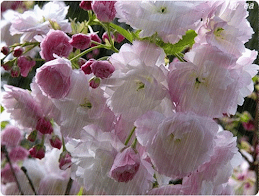- From Wikipedia, the free Encyclopedia
Photo: Internet screengrab
http://news.asiaone.com/sites/default/files/styles/w848/public/original_images/Oct2015/biangcover.jpg?itok=nte2s_nN
http://news.asiaone.com/news/asia/chinese-professor-punishes-tardy-students-making-them-write-56-stroke-character-1000-times
You would not want to be late for Mr Wang Sijun's class.
To discipline frequent latecomers, the professor who teaches at the Chengdu College of University of Electronic Science and Technology in China's Sichuan province came up with the unusual punishment of making them pen a horribly complicated Chinese character 1,000 times.
The character, pronounced "biang", is made up of at least 56 (58, see following picture) strokes and has its origins in a noodle dish popular in the north-western province of Shaanxi.
The character is composed of 言 (speak; 7 strokes) in the middle flanked by 幺 (tiny; 2×3 strokes) on both sides. Below it, 馬 (horse; 10 strokes) is similarly flanked by 長 (grow; 2×8 strokes). This central block itself is surrounded by 月 (moon; 4 strokes) to the left, 心 (heart; 4 strokes) below, 刂 (knife; 2 strokes) on the right, and 八 (eight; 2 strokes) above. These in turn are surrounded by a second layer of characters, namely 宀 (roof; 3 strokes) on the top and 辶 (walk; 4 strokes) curving around the left and bottom.
From Wikipedia, the free encyclopedia, https://en.wikipedia.org/wiki/Biangbiang_noodles
Photo Source: Internet screengrabs
https://blogger.googleusercontent.com/img/b/R29vZ2xl/AVvXsEj3mk7oMQJMgpnwUXKrmrE_5xiKK-UOBc2GmmXs46kRDAbpVjyR4Og5vcBwtRKKQcTo2yrkqec3WAjaZF5_5_xBEmYpic4aT7XSrxQWLmRwytBxWYh_xjrU3yo-BNF6mTELb9MnOHhPfFY/s1600/biang1.jpg
http://news.asiaone.com/sites/default/files/styles/w641/public/original_images/Oct2015/biang1.jpg?itok=IA1iyXAj
http://news.asiaone.com/news/asia/chinese-professor-punishes-tardy-students-making-them-write-56-stroke-character-1000-times
Known as biang biang noodles and typically eaten by commoners, it gained nationwide fame in February 2014 when China President Xi Jinping was spotted tucking into a bowl during a visit his hometown of Xi'an, Shaanxi's capital city.
According to local media, Mr Wang was inspired by the noodles after a trip to Shaanxi earlier this month.
The penalty has been meted out to two students thus far - with interesting results.
The first, a female student surnamed Cheng, said it was too tiring to continue after writing it 200 times. She asked for a different punishment and promised Mr Wang she would never be late for class again.
She asked for a different punishment and promised Mr Wang she would never be late for class again.
Photo Source: Internet screengrabs
https://blogger.googleusercontent.com/img/b/R29vZ2xl/AVvXsEjozX4FysfHEGa_xlp_Zqi5QHsnO_RZOgbqsRah6xSdbRbsglHcYjLOaT63ddjRQ8k4yaP5Y-r40pSxMzhnKtmU2KnVU-tZkZmLYTFUUdJYNWv7SGXDqSgtZ3fcItWzLP9mb7H8K9bxp8w/s1600/biang2.jpg
http://news.asiaone.com/sites/default/files/styles/w641/public/original_images/Oct2015/biang2.jpg?itok=XIkk2ZTK
http://news.asiaone.com/news/asia/chinese-professor-punishes-tardy-students-making-them-write-56-stroke-character-1000-times
Instead of even attempting to write the character, the second student, Zhou Feng offered to draw one hundred terracotta warriors instead, a task he took two hours to complete.
Photo Source: Internet screengrabs
https://blogger.googleusercontent.com/img/b/R29vZ2xl/AVvXsEghvYBmjk39KFw1lddmypTXXU9tHYbIKIX2itF9roRm5NodPx7tT8WanhEaWf2ECgmoTKPOrnSvS_LH-5E6eIU7GvhDa8o5GBX-6Fy5ax6F130QVsy_hnm7FDjWJ9OSzg5zdEwVZQ9jxlU/s1600/biang3.jpg
http://news.asiaone.com/sites/default/files/styles/w641/public/original_images/Oct2015/biang3.jpg?itok=m5eZaPld
http://news.asiaone.com/news/asia/chinese-professor-punishes-tardy-students-making-them-write-56-stroke-character-1000-times
Mr Wang's novel punishment has since gone viral, with netizens on micro-blogging platform Weibo sharing the character and praising him for being creative.
In March, another Chinese character took the spotlight. Pronounced "duang", it was formed using a combination of actor Jackie Chan's name.
By Lee Min Kok, The Straits Times, Saturday, 31 October 2015
Get a copy of The Straits Times or go to straitstimes.com for more stories.

PHOTO: Another complex characters: The kanji character has 84 strokes, and means: Appearance of a dragon in flight
Taito, daito, or otodo,
https://blogger.googleusercontent.com/img/b/R29vZ2xl/AVvXsEjAlhGKxh4OM3loWWntL061VEgur8bC0-nUGcTAV76E-JLsKObE84DM_YmDjd5Wg81b8CQTjil_3O59-kJ_SfDnlwzqFwgRI00AerzHH6ADKttHut3eZtV3iWdwdxwk9bJV90MOfARLPTE/s1600/biang10.jpg
http://news.asiaone.com/sites/default/files/styles/w641/public/original_images/Oct2015/biang10.jpg?itok=IKb97TBI
http://news.asiaone.com/news/asia/chinese-professor-punishes-tardy-students-making-them-write-56-stroke-character-1000-times
Photo Source: Internet screengrabs
https://blogger.googleusercontent.com/img/b/R29vZ2xl/AVvXsEh0eHRLTxgoIxZHChO4q70CsrOJoVtyI41JLFo7iXRPP5GNLah_t2bzAbHCjf-_OY3-A26ZfMo0B4WXckWI99xAdw8MAWROVl9ZwIZ_PPRc3uzNl364cxpt62oFWxY4PGA1TC4w7H-U1hA/s1600/biang6.jpg
http://news.asiaone.com/sites/default/files/styles/w641/public/original_images/Oct2015/biang6.jpg?itok=x3dYV0Aw
http://news.asiaone.com/news/asia/chinese-professor-punishes-tardy-students-making-them-write-56-stroke-character-1000-times
Photo Source: Internet screengrabs
https://blogger.googleusercontent.com/img/b/R29vZ2xl/AVvXsEhzRcsr9iKxCw719bVupaHLuaSA9plJGQLpE5dJugp2Z3mpp1vQoPQ1Krjkfd5QJy6_okycGlf3rQMTmRHfc1aIH3VPL5q3X5H636Cx19p_NxFjofVqluLEI4LWikfbi5cLEUKu7_WiprM/s1600/biang7.jpg
http://news.asiaone.com/sites/default/files/styles/w641/public/original_images/Oct2015/biang7.jpg?itok=Qk8mqqpI
http://news.asiaone.com/news/asia/chinese-professor-punishes-tardy-students-making-them-write-56-stroke-character-1000-times
Poor pronouncing of words due to sniffing
Photo Source: Internet screengrabs
https://blogger.googleusercontent.com/img/b/R29vZ2xl/AVvXsEhaZCII35HYDQiBMjFAggBI8cdq3QzVcgJSgvr33P5ypls2VwSoaTwDRLWtFbhpFlZoZ68CmGZZJpAMop-rSpLypCm2mUEo0r8CWLyWz7NPz72jDrgCqbazSlBkclpPGhKXmm1Pok71tB4/s1600/biang8.jpg
http://news.asiaone.com/sites/default/files/styles/w641/public/original_images/Oct2015/biang8.jpg?itok=BD4hDscs
http://news.asiaone.com/news/asia/chinese-professor-punishes-tardy-students-making-them-write-56-stroke-character-1000-times
Photo Source: Internet screengrabs
https://blogger.googleusercontent.com/img/b/R29vZ2xl/AVvXsEiyLtH6ChGpZdjqovpFCAJlCGMGn5XvNRxG1m-dG3Xa0lCh6gLtD_2ZPNSwrkKbXVxOPTRYece-p6HoRi2bjWDs2bbsghJ2zKiG-IbuOqXdmdMlm1sw-lY0QoiddGx0X8q151NIxk49Bp4/s1600/biang12.jpg
http://news.asiaone.com/sites/default/files/styles/w641/public/original_images/Oct2015/biang12.jpg?itok=zQHggEVe
http://news.asiaone.com/news/asia/chinese-professor-punishes-tardy-students-making-them-write-56-stroke-character-1000-times
Photo Source: Internet screengrabs
https://blogger.googleusercontent.com/img/b/R29vZ2xl/AVvXsEjvVwXVucrYQIH_AHE9SGBRYuETEaosAn21BFBOv5sKIO3-HEbU3RO6bRlmt8889KNk8NBvyicv_pCkPX_HPL9bJM_Aj61rGBuw31hpIfWFGvTYfYOOsv33BT3YIW7RBaLKH8fj4byrRHs/s1600/biang13.jpg
http://news.asiaone.com/sites/default/files/styles/w641/public/original_images/Oct2015/biang13.jpg?itok=xJFAh1pC
http://news.asiaone.com/news/asia/chinese-professor-punishes-tardy-students-making-them-write-56-stroke-character-1000-times
Photo Source: Internet screengrabs
https://blogger.googleusercontent.com/img/b/R29vZ2xl/AVvXsEg99hQ2Z1rNO6qrYbX1AJOi76VxRXCtuCT-N28vYXq0xt0qNFPGDgZOxJN_RrdoURc1xmNGIQfwRAOZjwLp8a8s7OPEpQw1KudUg4Oj7459uYgcLPnhPrWJTtUzrgz4vtxeRzUI1U_SnDQ/s1600/biang14.jpg
http://news.asiaone.com/sites/default/files/styles/w641/public/original_images/Oct2015/biang14.jpg?itok=J0QyE_kq
http://news.asiaone.com/news/asia/chinese-professor-punishes-tardy-students-making-them-write-56-stroke-character-1000-times
Photo Source: Internet screengrabs
https://blogger.googleusercontent.com/img/b/R29vZ2xl/AVvXsEjCXWS2A7VdK5wbH-pK0VwNsUib7Lxs4ZfBVEozcOpHAxTpNwdUoaNT_ZEmaGSLlJwtalBKLx89GcHggeNSpfzZVb3hR-eHlZH_HK1EFpfl5dN5Xwt_SnjrrRVs6ztruGSBO1RyJFh_y1g/s1600/biang15.jpg
http://news.asiaone.com/sites/default/files/styles/w641/public/original_images/Oct2015/biang15.jpg?itok=G0YwyXjy
http://news.asiaone.com/news/asia/chinese-professor-punishes-tardy-students-making-them-write-56-stroke-character-1000-times
Life is like a show and a show is like a replay of life. Isn't everyone's life like a show? Who doesn't fight and struggle between work? Who is not affected by the various stages in life and vicissitudes (changes) of life? The seemingly splendid life everybody leads in fact hides a life of loneliness. Friends may be many but buddies are few. Everyone has his life story. How one's story should end lies in one's hands...
Posted by mp3you.eu
https://blogger.googleusercontent.com/img/b/R29vZ2xl/AVvXsEiASzOVSAfF_1ApJbMzNhRFU1sWqf9X8rSebEO8wNLw5tqzy9Y_znWm3cprlEuV_11XecyeXi3eDH9kIB5hPZ8rfwLgTpxpejgbESLaEqhoqbkCWHKKNnPqJb0Z6nBX_195n16oUW1_4V8/s1600/sddefault-1.jpg
https://i.ytimg.com/vi/MySxL5yGBeY/sddefault.jpg
http://www.mp3you.eu/m/v.php?id=MySxL5yGBeY
Reference
[2] List of CJK Unified Ideographs, part 1 of 4, Range 4E00–62FF, From Wikipedia, the free encyclopedia, https://en.wikipedia.org/wiki/List_of_CJK_Unified_Ideographs,_part_1_of_4
[3] List of CJK Unified Ideographs, part 2 of 4, Range 6300–77FF, From Wikipedia, the free encyclopedia, https://en.wikipedia.org/wiki/List_of_CJK_Unified_Ideographs,_part_2_of_4
[4] List of CJK Unified Ideographs, part 3 of 4, Range 7800–8CFF, From Wikipedia, the free encyclopedia, https://en.wikipedia.org/wiki/List_of_CJK_Unified_Ideographs,_part_3_of_4
[5] List of CJK Unified Ideographs, part 4 of 4, Range 8D00–9FFF, From Wikipedia, the free encyclopedia, https://en.wikipedia.org/wiki/List_of_CJK_Unified_Ideographs,_part_4_of_4
- https://blogger.googleusercontent.com/img/b/R29vZ2xl/AVvXsEjivxfbpAfwutQu0XwNFTmDhsxyezxs2Xni_KjfnIjMMQSbuZ1LsNTKn_xCRqY4tiw6W9bKUN0ecUBxCHP3d8ZPzE231wIKHtyHep-NFuP0BA77shJxu_9Dn5ZP8QkKVrbnv3sdYtwSHyk/s1600/biangcover.jpg
- http://news.asiaone.com/sites/default/files/styles/w848/public/original_images/Oct2015/biangcover.jpg?itok=nte2s_nN
- http://news.asiaone.com/news/asia/chinese-professor-punishes-tardy-students-making-them-write-56-stroke-character-1000-times
- https://blogger.googleusercontent.com/img/b/R29vZ2xl/AVvXsEj3mk7oMQJMgpnwUXKrmrE_5xiKK-UOBc2GmmXs46kRDAbpVjyR4Og5vcBwtRKKQcTo2yrkqec3WAjaZF5_5_xBEmYpic4aT7XSrxQWLmRwytBxWYh_xjrU3yo-BNF6mTELb9MnOHhPfFY/s1600/biang1.jpg
- http://news.asiaone.com/sites/default/files/styles/w641/public/original_images/Oct2015/biang1.jpg?itok=IA1iyXAj
- http://news.asiaone.com/news/asia/chinese-professor-punishes-tardy-students-making-them-write-56-stroke-character-1000-times
- https://blogger.googleusercontent.com/img/b/R29vZ2xl/AVvXsEjozX4FysfHEGa_xlp_Zqi5QHsnO_RZOgbqsRah6xSdbRbsglHcYjLOaT63ddjRQ8k4yaP5Y-r40pSxMzhnKtmU2KnVU-tZkZmLYTFUUdJYNWv7SGXDqSgtZ3fcItWzLP9mb7H8K9bxp8w/s1600/biang2.jpg
- http://news.asiaone.com/sites/default/files/styles/w641/public/original_images/Oct2015/biang2.jpg?itok=XIkk2ZTK
- http://news.asiaone.com/news/asia/chinese-professor-punishes-tardy-students-making-them-write-56-stroke-character-1000-times
- https://blogger.googleusercontent.com/img/b/R29vZ2xl/AVvXsEghvYBmjk39KFw1lddmypTXXU9tHYbIKIX2itF9roRm5NodPx7tT8WanhEaWf2ECgmoTKPOrnSvS_LH-5E6eIU7GvhDa8o5GBX-6Fy5ax6F130QVsy_hnm7FDjWJ9OSzg5zdEwVZQ9jxlU/s1600/biang3.jpg
- http://news.asiaone.com/sites/default/files/styles/w641/public/original_images/Oct2015/biang3.jpg?itok=m5eZaPld
- http://news.asiaone.com/news/asia/chinese-professor-punishes-tardy-students-making-them-write-56-stroke-character-1000-times
- https://blogger.googleusercontent.com/img/b/R29vZ2xl/AVvXsEjAlhGKxh4OM3loWWntL061VEgur8bC0-nUGcTAV76E-JLsKObE84DM_YmDjd5Wg81b8CQTjil_3O59-kJ_SfDnlwzqFwgRI00AerzHH6ADKttHut3eZtV3iWdwdxwk9bJV90MOfARLPTE/s1600/biang10.jpg
- http://news.asiaone.com/sites/default/files/styles/w641/public/original_images/Oct2015/biang10.jpg?itok=IKb97TBI
- http://news.asiaone.com/news/asia/chinese-professor-punishes-tardy-students-making-them-write-56-stroke-character-1000-times
- https://blogger.googleusercontent.com/img/b/R29vZ2xl/AVvXsEh0eHRLTxgoIxZHChO4q70CsrOJoVtyI41JLFo7iXRPP5GNLah_t2bzAbHCjf-_OY3-A26ZfMo0B4WXckWI99xAdw8MAWROVl9ZwIZ_PPRc3uzNl364cxpt62oFWxY4PGA1TC4w7H-U1hA/s1600/biang6.jpg
- http://news.asiaone.com/sites/default/files/styles/w641/public/original_images/Oct2015/biang6.jpg?itok=x3dYV0Aw
- http://news.asiaone.com/news/asia/chinese-professor-punishes-tardy-students-making-them-write-56-stroke-character-1000-times
- https://blogger.googleusercontent.com/img/b/R29vZ2xl/AVvXsEhzRcsr9iKxCw719bVupaHLuaSA9plJGQLpE5dJugp2Z3mpp1vQoPQ1Krjkfd5QJy6_okycGlf3rQMTmRHfc1aIH3VPL5q3X5H636Cx19p_NxFjofVqluLEI4LWikfbi5cLEUKu7_WiprM/s1600/biang7.jpg
- http://news.asiaone.com/sites/default/files/styles/w641/public/original_images/Oct2015/biang7.jpg?itok=Qk8mqqpI
- http://news.asiaone.com/news/asia/chinese-professor-punishes-tardy-students-making-them-write-56-stroke-character-1000-times
- https://blogger.googleusercontent.com/img/b/R29vZ2xl/AVvXsEhaZCII35HYDQiBMjFAggBI8cdq3QzVcgJSgvr33P5ypls2VwSoaTwDRLWtFbhpFlZoZ68CmGZZJpAMop-rSpLypCm2mUEo0r8CWLyWz7NPz72jDrgCqbazSlBkclpPGhKXmm1Pok71tB4/s1600/biang8.jpg
- http://news.asiaone.com/sites/default/files/styles/w641/public/original_images/Oct2015/biang8.jpg?itok=BD4hDscs
- http://news.asiaone.com/news/asia/chinese-professor-punishes-tardy-students-making-them-write-56-stroke-character-1000-times
- https://blogger.googleusercontent.com/img/b/R29vZ2xl/AVvXsEiyLtH6ChGpZdjqovpFCAJlCGMGn5XvNRxG1m-dG3Xa0lCh6gLtD_2ZPNSwrkKbXVxOPTRYece-p6HoRi2bjWDs2bbsghJ2zKiG-IbuOqXdmdMlm1sw-lY0QoiddGx0X8q151NIxk49Bp4/s1600/biang12.jpg
- http://news.asiaone.com/sites/default/files/styles/w641/public/original_images/Oct2015/biang12.jpg?itok=zQHggEVe
- http://news.asiaone.com/news/asia/chinese-professor-punishes-tardy-students-making-them-write-56-stroke-character-1000-times
- https://blogger.googleusercontent.com/img/b/R29vZ2xl/AVvXsEjvVwXVucrYQIH_AHE9SGBRYuETEaosAn21BFBOv5sKIO3-HEbU3RO6bRlmt8889KNk8NBvyicv_pCkPX_HPL9bJM_Aj61rGBuw31hpIfWFGvTYfYOOsv33BT3YIW7RBaLKH8fj4byrRHs/s1600/biang13.jpg
- http://news.asiaone.com/sites/default/files/styles/w641/public/original_images/Oct2015/biang13.jpg?itok=xJFAh1pC
- http://news.asiaone.com/news/asia/chinese-professor-punishes-tardy-students-making-them-write-56-stroke-character-1000-times
- https://blogger.googleusercontent.com/img/b/R29vZ2xl/AVvXsEg99hQ2Z1rNO6qrYbX1AJOi76VxRXCtuCT-N28vYXq0xt0qNFPGDgZOxJN_RrdoURc1xmNGIQfwRAOZjwLp8a8s7OPEpQw1KudUg4Oj7459uYgcLPnhPrWJTtUzrgz4vtxeRzUI1U_SnDQ/s1600/biang14.jpg
- http://news.asiaone.com/sites/default/files/styles/w641/public/original_images/Oct2015/biang14.jpg?itok=J0QyE_kq
- http://news.asiaone.com/news/asia/chinese-professor-punishes-tardy-students-making-them-write-56-stroke-character-1000-times
- https://blogger.googleusercontent.com/img/b/R29vZ2xl/AVvXsEjCXWS2A7VdK5wbH-pK0VwNsUib7Lxs4ZfBVEozcOpHAxTpNwdUoaNT_ZEmaGSLlJwtalBKLx89GcHggeNSpfzZVb3hR-eHlZH_HK1EFpfl5dN5Xwt_SnjrrRVs6ztruGSBO1RyJFh_y1g/s1600/biang15.jpg
- http://news.asiaone.com/sites/default/files/styles/w641/public/original_image/Oct2015/biang15.jpg?itok=G0YwyXjy
- http://news.asiaone.com/news/asia/chinese-professor-punishes-tardy-students-making-them-write-56-stroke-character-1000-times
- https://blogger.googleusercontent.com/img/b/R29vZ2xl/AVvXsEiASzOVSAfF_1ApJbMzNhRFU1sWqf9X8rSebEO8wNLw5tqzy9Y_znWm3cprlEuV_11XecyeXi3eDH9kIB5hPZ8rfwLgTpxpejgbESLaEqhoqbkCWHKKNnPqJb0Z6nBX_195n16oUW1_4V8/s1600/sddefault-1.jpg
- https://i.ytimg.com/vi/MySxL5yGBeY/sddefault.jpg
- http://www.mp3you.eu/m/v.php?id=MySxL5yGBeY





















































.jpg)
.gif)
.jpg)

















































%20-%20%E5%82%B7%E5%BF%83%E7%9A%84%E8%B7%AF%20(Sh%C4%81ng%20x%C4%ABn%20de%20l%C3%B9)%20-%20The%20Road%20of%20Sorrow%20(With%20Subtitle)_11.png)






